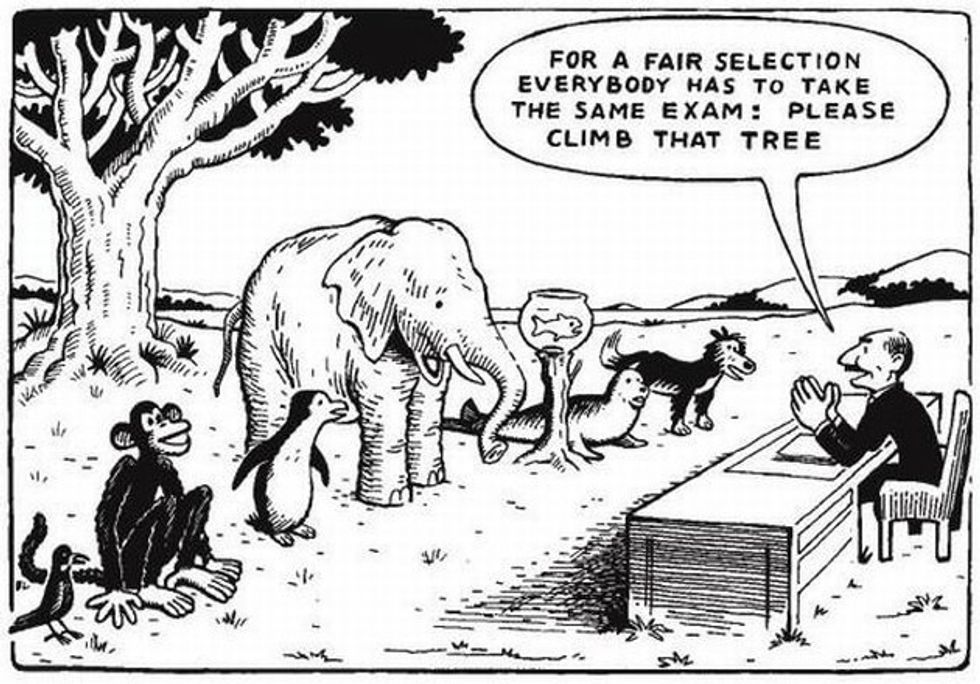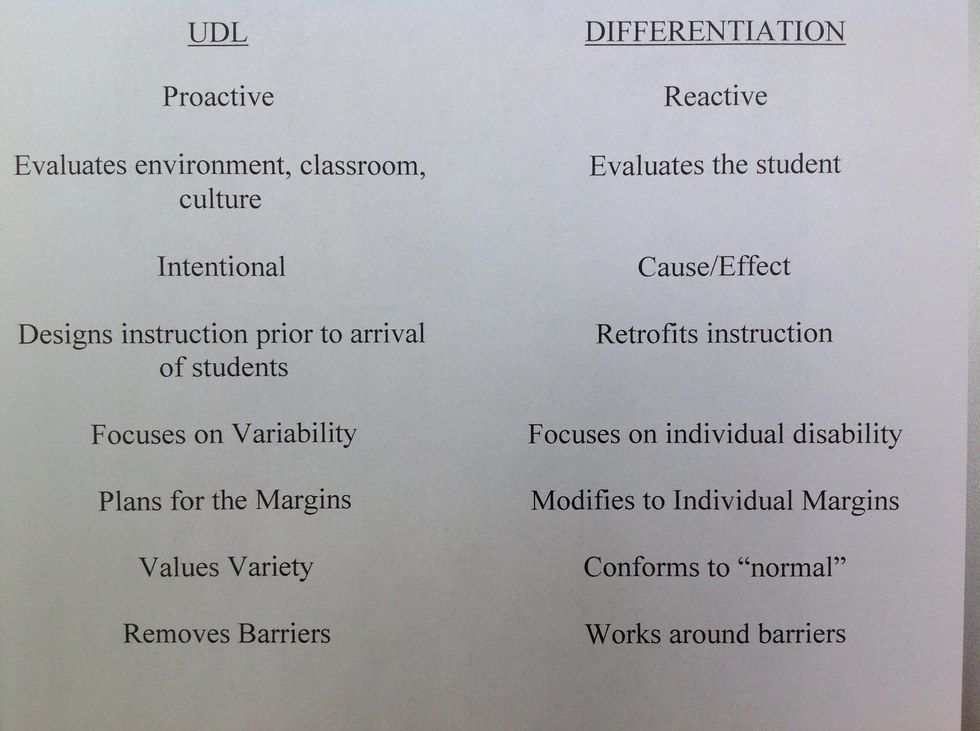Sometimes the best way to learn about something is to better understand what it is not! As in every area of life, we have misconceptions about what is accurate and presuppositions that cloud our ability to truly embrace something with fidelity. My goal with this piece is to share some things "Universal Design for Learning (UDL)" is NOT!
UDL is Not:
1. Just Good Teaching
Good teaching isn't a bad thing. However, good teaching isn't automatically UDL. Universal Design for Learning at its core is intentional design. UDL is a framework based on the three networks of the brain associated with learning: Affective, Recognition and Strategic. These three networks are supported through the three principles of UDL (CAST 2012). Intentional design provides options, scaffolding, and accessibility to learning through: Multiple Means of Engagement, Representation, and Action & Expression.
2. Something You Do
You "do" the dishes, you don't "do" UDL. Universal Design for Learning is a radical way to think about how and why you teach the way you do. It is a framework you employ to "design" learning environments that are conducive to learner variability. If you build it they may come, but if you "design" it they will learn!
3. A Checklist
Believing UDL is a checklist is dangerous, because it implies that it has a static end point where once you reach it you have "arrived." Lifelong learning is a process. Universal Design for Learning causes us to design, reflect and continuously strive for the most accessible learning environment.
Again, we think about how and why we are designing and delivering instruction. This intentionality causes us to evaluate the learning environment and the curriculum for barriers to learning. We can then see the context, the curriculum, the environment as disabled or disabling versus focusing on student deficit.
4. One More Thing to Add to Your Proverbial Plate
Since UDL is not something you "do," it also isn't just one more thing you add to an already very full plate, as an educator. You might even say, "UDL IS the plate!" It is the framework and foundation for designing and delivering instruction. When you design your curriculum (goals, methods, materials, assessments) and your learning environment with UDL as your framework it informs you with the How, Why, and What of teaching and learning.
5. Differentiated Instruction
The difference between UDL and Differentiated Instruction is that UDL proactively evaluates the curriculum, instructional practice and learning environment to provide access to the content and skill on the front end.
Differentiated Instruction reactively evaluates individual students and retrofits or modifies on the back end. While this may occasionally be utilized for a specific or special need, design on the front end with systematic variability in mind will create the most flexible, engaging and responsive learning environment.
For more information on Universal Design for Learning click here.
CAST, Inc. (2012) Retrieved from: http://www.udlcenter.org/aboutudl/whatisudl








 Christmas and New Year gift card
Photo by
Christmas and New Year gift card
Photo by  butter cookies on plate
Photo by
butter cookies on plate
Photo by  boy holding Holy
boy holding Holy 












